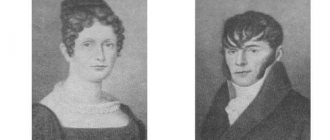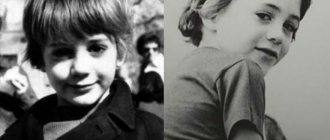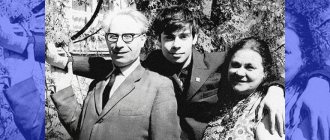The biography of Robert Burns is inseparable from the Scottish land and the Scottish people. In this inextricable connection lies the power and beauty of Burns' poetry. In his poems, the poet glorifies values that are understandable to many. His original poetry celebrates simple physical labor, freedom, selfless love and selfless friendship. Burns's work is imbued with love for the Motherland, nature and people. His poetic lines turned into real hits - slogans, proverbs, catchphrases, and his poems became folk songs.
National holiday
Robert Burns is a truly unique poet. There are few countries in which there is a writer whose birthday has been celebrated according to a pre-established procedure for more than two centuries.
January 25 is a real national holiday in Scotland, which is remembered by all its residents. On this day, it is customary to set a rich table made up of dishes that the poet sang in his works. First of all, it is a rich pudding called haggis. It is prepared from lamb offal (liver, heart and lungs), mixed with lard, onions, salt and all kinds of seasonings, and then boiled in a lamb stomach.
According to ancient tradition, it is customary to bring these dishes into the room accompanied by Scottish bagpipes, and before starting the feast, one should read the poems of Burns himself. For example, “Zazdravny Toast”, known in Russia as translated by Samuil Marshak, or “Ode to Scottish Haggis Pudding”. On this day, the poet’s name day is celebrated by admirers of his work around the world.
Childhood and youth
Robert Burns was born in 1759. He was born in a small Scottish village called Alloway, which is located just three kilometers from the town of Ayr in Ayrshire. His father was a peasant named William.
In 1760, William Burns rented a farm, introducing Robert and his brother to hard physical labor from an early age. They did almost all the dirty and hard work themselves. At that time, the family did not live well, there were always problems with money, and at times there was even nothing to eat. Due to the fact that Robert Burns often went hungry as a child, this negatively affected his health in the future. He constantly had problems with his health.
In between work, Robert Burns literally voraciously read all the books in a row. Literally everything he could get his hands on in his small village.
As a rule, these were inexpensive brochures with a simple plot and content. But it was thanks to them, as well as the knowledge that his mother and servants passed on to him, that the hero of our article became acquainted with traditional Scottish folklore. In the future, it became an important part of his life and was reflected in most of Robert Burns' books. He wrote his first poems in 1774.
Childhood
Robert Burns was born on January 25 in the village of Alloway, located near the town of Ayr, Ayrshire, into a peasant family. His mother died during childbirth, so only his father was involved in raising his son. However, Robert’s childhood cannot be called happy. In order to feed his family (Robert had a younger brother, Gilbert), his father had to rent the Mount Oliphant farm, where he began to work tirelessly.
And since Gilbert was still too young at that time, Robert soon had to join his father. Later, the poet admits to his friends and colleagues that it was the most difficult childhood of all that he had heard and seen. The boy worked day and night growing grain, fruits and vegetables. During daylight hours he was in the field, and when night fell, having rested only a couple of hours at sunset, he began to clean the stables and barns where his father kept cattle for sale and work. The hellish work, of course, left an indelible mark on the boy’s heart and was subsequently reflected more than once in his works.
Moving
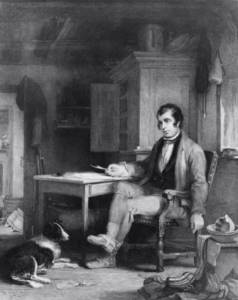
An important new stage in the biography of Robert Burns is the move to a farm called Lochley, which took place in 1777, when he was 18 years old.
Here he found many like-minded people who, like Burns himself, were interested in literature, Scottish history and folklore. As a result, he becomes the organizer of the Bachelors Club.
In 1781, Robert Burns came under the influence of the Freemasons. This fact has a serious impact on all his subsequent works, and on his creative style itself.
Popularity
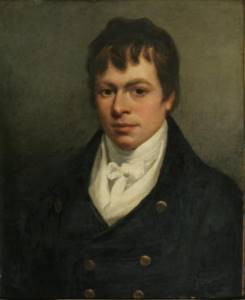
The hero of our article becomes popular in his homeland in Scotland after the publication of two satirical poems entitled “The Two Shepherds” and “The Prayer of Saint Willie.” These books by Robert Burns are published in 1784 and 1785 respectively.
But what makes him truly famous as a writer is his “Poems written primarily in the Scottish dialect.” This collection was published in 1786.
The next year he comes to Edinburgh, where he quickly becomes a welcome guest in high society. Robert Burns's poems are valued in aristocratic circles, so he immediately has influential patrons. The hero of our article himself soon becomes the owner of the unofficial status of “Bard of Caledonia.” His name is assigned by the Masonic Grand Lodge.
Since 1783, Burns has written many of his works in the Ayshire dialect. And in 1784 his father died. The hero of our article, together with his brother, are trying to manage the farm together, taking care of the affairs of the farm, but after several unsuccessful attempts they leave it.
By this period of creativity, which can be called the initial period, such famous poems by Robert Burns as “John Barleycorn”, “Holy Fair”, “The Prayer of Holy Willie” were published. His fame spreads throughout the country.
It is interesting how the German poet Johann Wolfgang Goethe assessed its popularity. Goethe emphasized that the greatness of Burns lies in the fact that the old ancestors of his native people always lived in the mouths of all his relatives. It was in them that he found a living foundation, relying on which he was able to advance so far. In addition, his own songs immediately found fertile ears among his own people, as they often sounded from the lips of sheaf binders and reapers who walked towards him.
The beginning of a creative career
Interesting facts from Burns’ life include his membership in the Masonic Lodge of St. David, which he joined in 1781. Freemasonry had a great influence on the formation of the young man’s personality and on all his further work.
In the short biography of Robert Burns, the period when he did what he loved - writing - covers only 12 years. Burns' life changed dramatically after his father's death in 1784. He finally began to write, something he had dreamed of all his adult life. Already his first published works - “John Barleycorn”, “The Two Shepherds”, “The Prayer of Saint Willie” - brought the aspiring poet fame in Scotland. Burns consolidated his success by publishing his first collection, Poems Chiefly in the Scotch Dialect, in 1786.
Robert Burns wrote in a simple language accessible to the common people, which nevertheless was distinguished by its beauty and melody. He relied on folk art, which he was able to ennoble, give it aesthetics, and he was right. In the future, Burns did not betray himself and in his works he wrote about the life of ordinary people, folk holidays, and the nature of Scotland.
Life in Edinburgh
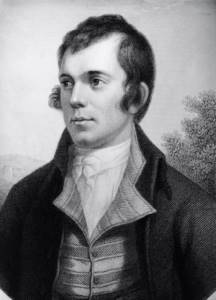
Since 1787, Burns began to live permanently in Edinburgh. Here he meets national music fan James Johnson. Together they begin to publish a collection, which they give the name “Scottish Music Museum”. The hero of our article remains its editor almost until the end of his life.
Together with Johnson, they are promoting Scottish folklore. This publication publishes a large number of ballads arranged by Burns himself, as well as his own original works.
They collected texts and melodies by any means from all kinds of sources, and if some lines turned out to be irretrievably lost or too frivolous, Robert Burns, a famous poet of his time, replaced them with his own. Moreover, he did it so skillfully that it was simply impossible to distinguish them from folk ones.
He also paid attention to the release of the collection "A Select Collection of Original Scottish Tunes".
All these books brought a good income to Burns himself and his companion Johnson. True, as soon as the hero of our article had his first small capital, he invested all of it in renting a farm, but as a result he completely went bankrupt. In 1789, he finally abandoned attempts to establish his own business.
In 1790, having connected his own connections, of which he had accumulated quite a few by that time, Burns got a job as an exciseman in a rural area. Within a few months, he was transferred to Dumfries for his diligent service, and his salary became the poet’s main source of income for the coming years.
Due to his busy schedule, he could not devote as much time to poetry as he would have liked. Robert Burns's poems began to appear much less frequently. His poems “Honest Poverty”, “Tam o' Shanter”, as well as “Ode to the Memory of Mrs. Oswald” can be attributed to this period. In 1793, Robert Burns published his best works for the second time in two volumes.
In 1789 he wrote a famous poem dedicated to John Anderson. In it, the author, who is only 30 years old, begins to reflect on the prospect of death, the end of life’s journey, which surprises his researchers, and his contemporaries reacted to this with bewilderment.
Personal life
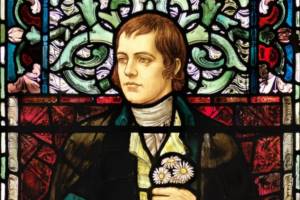
Speaking about the personal life of the hero of our article, it is worth noting that Burns led a very free lifestyle. He had three illegitimate daughters at once, who were born as a result of short-lived and casual relationships.
Robert Burns's wife's name was Jean Armor. She was his longtime lover, he had been courting her for several years. In total, five children were born to the happy parents.
All this time, Burns had to practice poetry virtually in between his main job, which was vital for him to support his family.
At the same time, he had very good prospects for moving up the career ladder. But his poor health did not allow him to achieve success in the service.
Personal life of Robert Burns
For his time, the writer Burns had fairly open views on the relationship between a man and a woman.
The surrounding society considered his lifestyle to be riotous, and his thinking unnatural and contrary to moral principles. Biographers talk about Robert's three illegitimate daughters. His numerous love affairs were no secret to anyone. Burns's personal life includes numerous interesting facts. After the death of his father at Mossgiel farm, the poet had an intimate relationship with a maid. As a result, in 1785 a girl was born. Puritan society condemned the writer, accusing him of fornication and imposing penance.
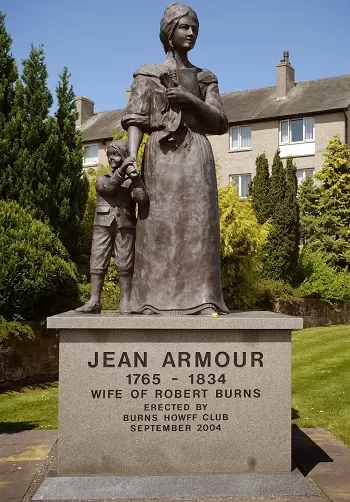
Burns was legally married to Jean Armor in 1787. The marriage was preceded by a relationship and the birth of a daughter. Robert officially wooed the girl, but Jean’s father, a wealthy Mokhlin contractor, did not approve of his daughter’s choice and opposed the marriage in every possible way. In 1787, he filed a lawsuit, accusing the poet of adultery and demanding huge monetary compensation. The case ends with a church “penitential bench” and a wedding.
Jean Armor gave the writer 5 children, the youngest of whom was born on the day of his father’s funeral.
At the end of life
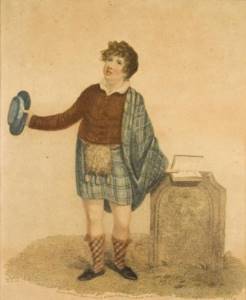
Moreover, the last years of his life, even despite such diligence, he spent in poverty and deprivation. Moreover, a week before his death he almost ended up in debtor's prison.
The poet died in July 1796 in Dumfries, where he went on official business for two weeks. It is known that at that time he was already sick, felt very bad, but still had to go to settle all matters. At that time he was only 37 years old.
Burns' authoritative biographer James Currie suggests that one of the reasons for his sudden death was alcohol abuse. But modern researchers believe that Curry himself may not have been completely objective, since he was in a temperance society, perhaps in this way he wanted to once again convince the public of the dangers of drinking alcohol.
A more convincing version is that Burns died from a whole range of problems. They were caused by backbreaking physical labor since childhood, which actually undermined his health. Chronic rheumatic carditis, which he suffered for many years, most likely since childhood, also played a role. In 1796, his condition worsened significantly after he contracted diphtheria.
On the day of the Scottish poet's funeral, his wife Jean Armor gave birth to their fifth child. The work of Robert Burns received the highest appreciation not only in his homeland, but also far beyond its borders. His work was distinguished by emotional, lively and expressive poetry. His works have been translated into dozens of languages, including Russian, and his ballads formed the basis for a large number of songs.
Burns's poems in Russia
The first prose translation of the works of this famous Scottish poet appeared four years after his death, in 1800. Robert Burns became popular in the USSR thanks to the highly artistic translations of S.
Marshak. Samuil Yakovlevich first turned to the work of the Scottish folklorist in 1924. From the mid-thirties, he began to engage in systematic translations of Burns' works. The first collection of Russian-language poems and poems was published in 1947. In total, Samuil Yakovlevich translated about 215 works, which is ¼ of the poet’s entire legacy. Marshak's interpretations are far from the literal text, but they are distinguished by the simplicity and ease of language, as well as a special emotional mood, close to Burns's works. Articles devoted to the work of this talented folklorist appear in periodicals every now and then. The eminent Russian cultural figure V. Belinsky carried out an in-depth study of Burns’s works. It should be noted that in his youth, Mikhail Lermontov translated the quatrains of the Scottish poet. To mark the centenary of the poet’s death in Russia, the publishing house of A. Suvorin published collections of poems and poems by Robert Burns.
Features of the language
Stories about Robert Burns always focus on his unique language, which immediately sets him apart from most other poets. It is worth noting that he received his basic education at a rural school, but his teacher was John Murdoch, a man with a university diploma.
At the time when the poet’s fame flourished, his native Scotland was at the peak of national revival and was considered one of the most cultural corners of Europe at that time. For example, on the territory of this small state there were five universities at once.
Murdoch did a lot to ensure that Burns received a comprehensive education; he saw that before him was the most talented of his students. In particular, they paid great attention to poetry, especially to the outstanding representative of British classicism of the 18th century, Alexander Pope.
Surviving manuscripts indicate that Burns had an impeccable command of literary English. In particular, “Sonnet to a Blackbird”, “The Villager’s Saturday Evening” and some of his other works were written on it.
In many of his other texts, he actively used the Scots language, which was considered at that time one of the dialects of English. This was his conscious choice, which was declared in the title of the first collection - “Poems Mainly in the Scottish Dialect.”
Initially, many of his works were specifically created as songs. It was not difficult, since the texts were musical and rhythmic. Russian composers, including Georgy Sviridov and Dmitry Shostakovich, also created musical works.
Burns' songs are often used in films, including domestic ones. For example, the romance “Love and Poverty” is heard in Viktor Titov’s musical comedy “Hello, I’m your aunt!” performed by Alexander Kalyagin, in Eldar Ryazanov’s lyrical comedy “Office Romance” the song “There is no peace for my soul” is performed by Alisa Freindlikh, and from the lips of Olga Yaroshevskaya we hear the composition “Love is like a red rose” in Pavel Lyubimov’s school melodrama “School Waltz”.
